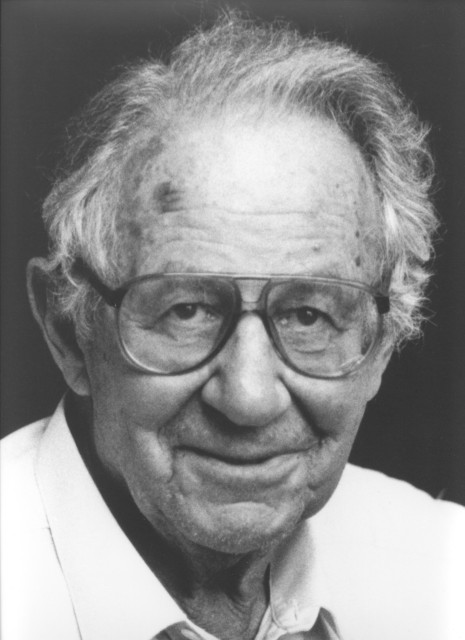Tadeus Reichstein
1897-1996

In a long life, Reichstein made important contributions to organic structure determination and synthesis, biochemistry, medicine, and biology. Early in his career he investigated the aroma substances of coffee and chicory, isolating some 50 components. In 1931-4 he determined the structure of ascorbic acid (Vitamin C) and developed a commercially practical method for its synthesis. But Reichstein is best known for his work on the steroidal hormones (cortisone, hydrocortisone and others) for which he shared (with E. C. Kendall and P. S. Hench) the 1950 Nobel Prize in Physiology or Medicine. The magnitude of this effort can be appreciated from the fact that some 10,000 beef cattle furnished 500 Kg of adrenal cortex glands from which only a few grams of extract could be obtained. From this, Reichstein identified 28 compounds, only five of which were biologically active.
In later years (1948-79) Reichstein isolated and identified various toxic substances from butterflies, toads, grasshoppers and other insects; he also worked on the genetic and chemical taxonomy of ferns.
Reichstein was born in Poland but when he was only nine, his parents moved to Switzerland to escape the Russian pogroms against Jews. After a degree in chemical engineering from the State Technical College in Zürich he obtained the Ph.D. (1922 working with Staudinger, see portrait, on coffee aromas). A period in Ruzicka's lab at the ETH in Zürich was followed in 1938 by a move to the University of Basel, where he became Professor and Director of the Pharmaceutical Institute and also established industrial ties with CIBA.
Sponsor: Arnold C. Ott
Location in chemistry building: Fifth Floor; West Wing North Wall; Sequence 4
Source: Professor Dr. Christoph Tamm